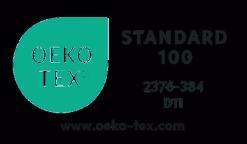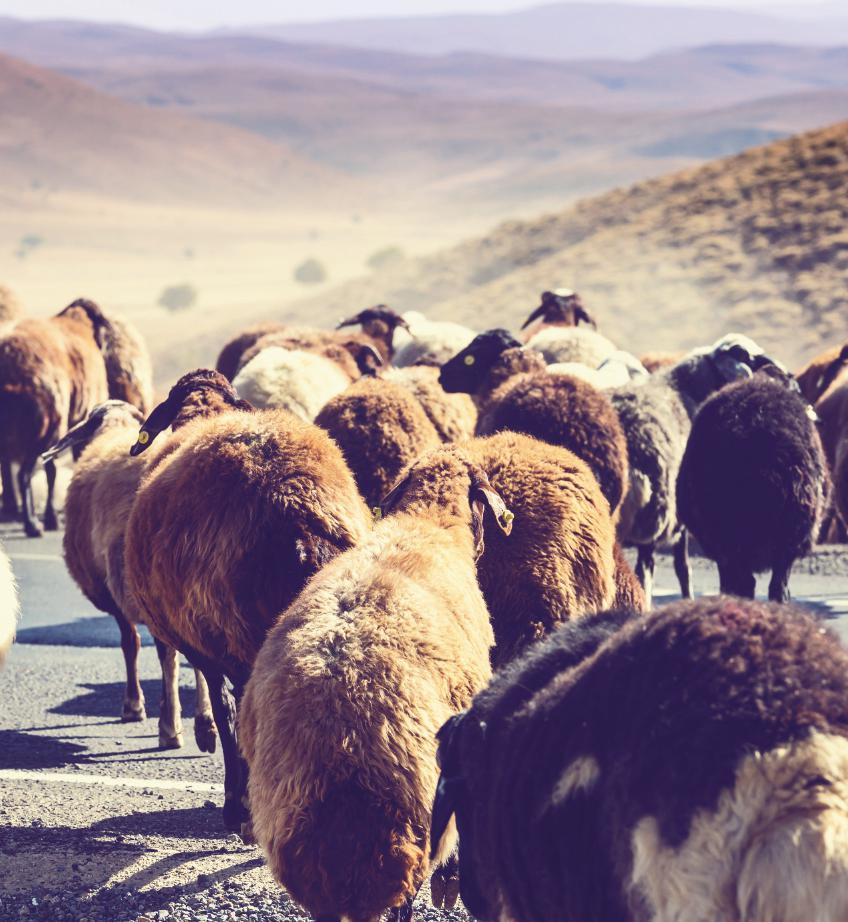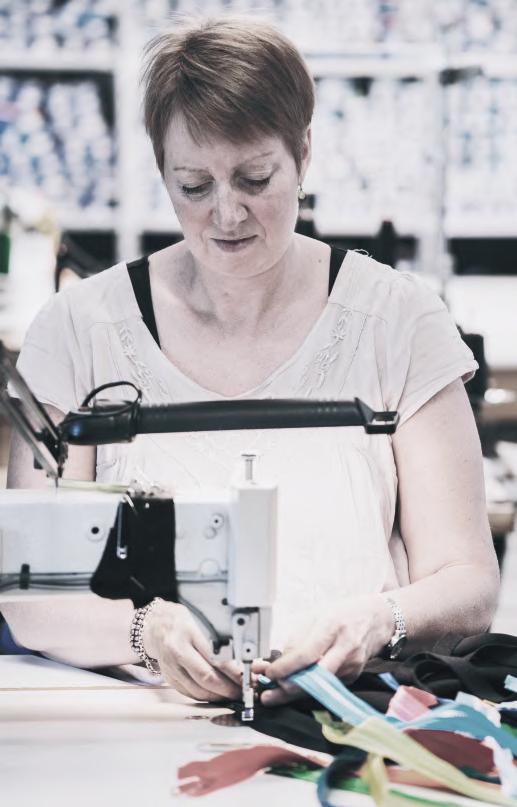ESG REPORT



A WORD FROM OUR CEO
INTRODUCTION
1.1 Basisforpreparation(B1)
1.2 AboutCLIPPER(C1)
1.3 Practices,policies,andfutureinitiativesfortransitioning towardsamoresustainableeconomy(B2,C2)
1.3.1 Environment
1.3.2 HumanRights
1.3.3 Employment&LabourRights
1.3.4 AnimalWelfare
1.3.5 DueDiligence
1.3.6 EmployeeHandbook
ENVIRONMENT
2.1 EnergyandCO2emissions(B3)
2.1.1 Energy
2.1.2 CO2emissions............................................................................................................................................................................................
2.2 ClimateTransition(C3)
2.3 Water(B6)
2.4 Resourceuse,circulareconomy,andwastemanagement(B7)
3.1OurWorkforce(B8,B9,B10)
3.2HumanRightsPolicies,Processes,andIncidents(C6,C7)
4.1GenderDiversityinCLIPPER’sboard(C9)

This step reflects not only our ambition to increase transparency, but also our recognition of the responsibility we share in contributing to the national and international sustainability agenda.
This report is an important milestone for CLIPPERA/SasourfirstESGreport.
This step reflects not only our ambition to increase transparency, but also our recognition of the responsibility we share in contributing to the national and internationalsustainabilityagenda.
At CLIPPER A/S, quality and craftsmanship have always been at the heart of our business.
Building on these values, we are now placing a growing emphasis on environmental, social, and governance (ESG)matters.
This report is the first step in systematically tracking our impact, identifying where improvements can be made, and setting thestageforlong-termprogress.
We are proud to present this initial report, but we are equally aware that much remainstobedone.
By combining our tradition of quality with a sharper ESG focus, including an exciting new collaboration with an ESG consultancy in 2025, we are confident that CLIPPER A/S can continue to grow responsibly while creating value for our employees and partners.
OnbehalfofCLIPPER

Claus Bak Mikkelsen CEO,CLIPPERA/S
published October 2025
We are excited to begin tracking and reporting on our performance, enabling us to identify where our efforts can create the greatest impact and drive meaningful change.

This marks CLIPPER A/S’s first ESG report. This is an important step in our sustainability journey, and we are excited to begin tracking and reporting on our performance, enabling us to identify where our efforts can create the greatest impactanddrivemeaningfulchange.
As this is the first year CLIPPER A/S has calculated the metrics presented in this report, no year-on-year comparisons are available.
Going forward, we look forward to using future reports to track and demonstrate ourprogressovertime.
To ensure our reporting is structured and comparable, we have chosen to base this report on the Voluntary Sustainability Reporting Standard for Non-Listed SMEs (VSME), developed by EFRAG and published in December 2024. By adopting this framework, we commit to a clear and consistent approach that reflects the scale andnatureofourbusiness.
This report represents the foundation of our ESG journey. It is both a starting point and a tool that will help guide CLIPPER A/S in setting priorities and monitoring ourprogress.
This ESG report has been prepared in accordance with both the basic and comprehensive modules from the reporting standard. We report on a consolidated basis, as we consider it natural to include both our parent company, CLIPPER A/S, and our Latvian subsidiary, SabiedrībaVSTeks(limitedliabilitycompany).
Unlessotherwisespecified,wewilluse“CLIPPER”tocollectivelyrefertobothentities.
A/S (HQ) Nakskovvej 1 7400
Sabiedrība VS Teks (Factory) Daugavpils Iela 71a
Certaininformationhasbeenexcludedfromthisreport:
Balance sheet
Gross turnover
These exclusions do not affect the overall picture of our ESG performance and priorities, and we remain committed to transparency and comparability in all other aspects of our reporting.
OEKO-TEX CERTIFICATIONS WOOLMARK CERTIFICATIONS
We are proud to hold an OEKO-TEX STANDARD100,ClassII,Annex4certification for both CLIPPER A/S and Sabiedrība VS Teks. OEKO-TEX® STANDARD 100 is a label fortextilestestedforharmfulsubstances.
Every item bearing the STANDARD 100 label is certified as having passed safety tests for the presence of harmful substances and are harmlesstohumanhealth.

CLIPPER holds the WOOLMARK certification. A globally recognised symbol of quality and integritywithinthewoolindustry.
It guarantees that products carrying the WOOLMARK label are made from pure new wool and meet strict performance and durability requirements. Furthermore, it ensures fibre authenticity, quality, and traceability.

CLIPPER specialises in high-quality knitted garments crafted from pure wool as well as wool- and cotton-blends. While our core collection is designed for men, we also offer a selection of styles for women. Production takes place at our own factory, VS-Teks, in Latvia, ensuring full control over quality and craftsmanship. Only a small share of our assortment consists of carefully selected tradedgoodsforresale.
Our business model is built around the NOOS (Never Out of Stock) program, which enables reliable day-to-day delivery directly from our warehouse in Herning. In addition, we offer customised orders, tailored to meet the specific needs of our customers.
CLIPPER operates as a supplier in both B2B, wholesale, and retail markets, with a strong foundation in Scandinavia as our primary market. Beyond this, we also maintain a solid presence in the Netherlands, Austria, Switzerland, and Germany, reflecting our established positioninNorthernandCentralEurope.
Our business relies on close partnerships with key suppliers. Our five largest suppliers account for around 80% of our total purchase volume, and they are located in Latvia (Sabiedrība VS Teks), Denmark, Italy, Bulgaria, and Germany, ensuring a well-diversified yet reliable supplychainacrossEurope.
SUPPLIERS
TOTAL OF 24
Our business relies on close partnerships with key suppliers.
To guide our sustainability efforts, we have established a Code of Conduct (CoC) that reflects internationally recognised standardsandprinciples.
Including the International Bill of Human Rights, the International Labour Organization’s Declaration on Fundamental Principles and Rights at Work, the UN Guiding Principles on Business and Human Rights, the OECD Guidelines for Multinational Enterprises, the OECD Due Diligence Guidance for Responsible Business Conduct, the UN Convention Against Corruption, the Rio Declaration on Environment and Development, and the UN Global Compact’sTenPrinciples.
Our Code of Conduct sets clear expectations for responsible business behaviour. All suppliers are required to sign the CoC, and they must also ensure compliance throughout their own supply chains.
This commitment extends to due diligence processes aimed at mitigating adverse impacts on human rights, labour rights, the environment (including climate), anticorruption,andanimalwelfare.
To ensure compliance, the content of the CoC must be communicated to all employees.
We assign great importance to collaboration and continuous improvementinoursupplierrelationships.
We expect our partners not only to meet the requirements of our CoC but also to demonstrate progress in strengthening their systems for managing risks and impacts.
We believe that constructive cooperation and transparent dialogue lay the foundation for more efficient partnerships thatbenefitallpartiesinvolved.
Currently, our Code of Conduct and the policies it encompasses are not publicly available. In addition, we have not yet defined future initiatives or goals within ourpolicies.
However, we view this as an evolving process, and this report marks an important step toward greater structure, transparency, and ambition in our sustainabilitypractices.

Our environmental policy addresses three areas put forth in the VSME: climate change, pollution, and water and ocean resources.
CLIMATE CHANGE
We recognise the urgency of addressing climate change and encourage energy efficiency measures across our value chain. We promote the use of renewable energy sources wherever possible as well as the calculation of greenhouse gas emissions and targetsfortheirreduction.
POLLUTION
CLIPPER encourages the reduction of waste and emissions to air, soil, and water. We underline the importance of handling chemicals responsibly and in compliance with applicable standards, ensuring safe use,storage,anddisposal.
WATER AND OCEAN RESOURCES
Compliance with all relevant laws, regulations, and industry guidelines on water conservation, water quality,andwastewatermanagementismandatory.
Within production processes, we urge our suppliers to minimise water use by implementing water-saving techniques and recycling wastewater where possible. Measures should also be in place to ensure that wastewater is treated effectively before being releasedbackintotheenvironment.

Our human rights policy addresses the VSME area of workers in the value chain and establishes clear expectations for fair and responsible treatment.

WORKERS IN THE VALUE CHAIN
All forms of forced, bonded, or involuntary labour are strictly prohibited in our own operationsandamongoursuppliers.
Moreover, we do not tolerate discrimination or harassment on any grounds. Suppliers are required to have procedures in place to prevent such practices and to implement correctivemeasureswhennecessary.
Workers must be free to raise concerns and report breaches of our Code of Conduct withoutfearofretaliation
Suppliers must establish rules for handling disputes and support worker representation.
Where freedom of association and collective bargaining are restricted by law, suppliers must ensure that workers can elect their own representatives and alternative forms of representation are supported.
Similarlytoourhumanrightspolicy,CLIPPER’semployment&labourrights policyaddressestheVSMEareaofworkersinthevaluechainand establishesminimumstandardsthatsuppliersmustuphold.
WORKERS IN THE VALUE CHAIN
Child labour is prohibited, and we have set a number of special rules when it comes to young workers under the age of 18 as well as for required actions to take in case prohibitedchildlabourisdetected.
Suppliers are required to implement robust age-verificationmechanisms.
Furthermore, all forms of coercion, abuse, or inappropriate disciplinary measures are prohibited, and workers must receive a living wage, along with entitlements such assickleaveandparentalleave.
Suppliers are responsible for providing safe, healthy,andhygienicworkingconditions.
Management representatives must be appointed to oversee policies and procedures related to health, safety, social welfare, and facilities, as well as ensure compliance. They must moreover perform regular risk assessments and implement preventivemeasures.
As outlined in CLIPPER’s Code of Conduct, minimum requirements include initiatives such as fire drills and chemical safety training.
Suppliers must provide accessible and effective grievance mechanisms. Minimum standards for these mechanisms are set outinthepolicy.
Workers must receive a living wage, along with entitlements such as sick leave and parental leave.
Animals in CLIPPER’s value chain must be fed and treated with dignity and respect.

ANIMAL WELFARE
In our animal welfare policy, we stipulate that all animals in CLIPPER’s value chain must be fed and treated with dignity and respect. No animal must deliberately be harmed nor exposed to pain in their lifespan.
At CLIPPER, we require all business partners to exercise due diligence to detect, prevent, and mitigate adverse impacts related to human and labour rights, the environment (includingclimate),andanti-corruption.
To ensure compliance, CLIPPER reserves the right to monitor and inspect suppliers at any time, and we require corrective action plans and follow-up inspections where breaches occur.
Suppliers must be able to document the origin of raw materials and components through a validated chain of custody, and they are required to appoint management representatives with the authority to ensure compliance with our Code of Conduct.
All suppliers are evaluated against our Code of Conduct, with priority given to those demonstrating commitment to compliance and continuous improvement. Where improvements are needed, suppliers must take corrective action withinanagreedtimeframe.
CLIPPER recognises that achieving strong social and environmental standards is an ongoing process, and we are committed to working collaboratively with suppliers to reachthesegoals.
However, where a supplier shows insufficient commitment or willingness to improve, CLIPPER will not hesitate to terminatethebusinessrelationship.
All suppliers are evaluated against our Code of Conduct, with priority given to those demonstrating commitment to compliance and continuous improvement.
CLIPPER’sownworkforceiscoveredinouremployeehandbook. Inaddition,theprinciplesinourCoCalsoapplytoallCLIPPERemployees.
OWN WORKFORCE
The handbook outlines the rules, values, rights, and commitments of all CLIPPER employees.Attheheartofourworkingculturearethreecorepillars: respect,communication,and collaboration.
These principles support a safe, fair, and inclusive workplace, where mutual respect is expected,bullyingisnottolerated,andemployees’righttotimeoffisupheld.
The Employee Handbook provides clear guidance on a wide range of topics, including:
Employee opportunities and rights: Optional membership of our staff association as well as the right to an annual performance review and to openly inform their respective leaders of any challenges.
Compensation and working conditions: Salary, vacation, and working hour specifications.
Conduct and workplace rules: Prohibition of smoking and alcohol, rules for company cars, and requirements for properdatadiscipline.
Health and safety:
Participation in annual fire drills and adherencetoestablishedprocedures.
Employee benefits:
Employees can purchase all products at costpriceinthecompanywebshop.
Through the Employee Handbook, CLIPPER ensures that all employees are informed of their rights and obligations while fostering a strong and supportive workplaceculture.

In 2024, CLIPPER’s total energy consumption amounted to 863.51 MWh. Our consumption is sourced from both renewable and non-renewable energy, with non-renewable sources representing the slightly larger share (57%).
At our factory in Latvia, heating is purchased from a neighbouring company that operates a biomass boiler fuelled by wood chips. This solution ensures that a significant part of our energy use comes from renewablesources.
The remaining share of our energy consumption stems primarily from electricity use in Denmark and Latvia as well as district heating in Denmark.
ENERGY CONSUMPTION (MWh)
This solution ensures that a significant part of our energy use comes from renewable sources.
In 2024, CLIPPER’s total Scope 1 and Scope 2 greenhouse gas emissions amounted to 45.4 tCO₂e. These figures will serve as our baseline year for futurecarbonaccountingandreductioninitiatives.
Our calculations are based on the GHG Protocol and use activity-based data. While we recognise that Scope 3 emissions often represent the largest share of a company’s climate impact, we have chosen for now to focusonbuildingsoliddatapracticesforScope1andScope2reporting.
THE GREENHOUSE GAS PROTOCOL
The Greenhouse Gas (GHG) Protocol is the most widely recognised global standard for calculating and managing greenhouse gas emissions. It distinguishes between three scopes:
SCOPE 01

Direct emissions
from sources owned or controlled by CLIPPER, such as company vehicles.
SCOPE 02
Indirect emissions
from the generation of purchased energy, primarily electricity and heating.
SCOPE 03
All other indirect emissions
throughout the value chain, both upstream and downstream.
As greenhouse gases include not only CO₂ but also others such as methane and laughing gas, emissions are converted into carbon dioxide equivalents (CO₂e).
This unit allows all greenhouse gases to be measured on a comparable basis and is reported in tonnes of CO₂e (tCO₂e).
Our Scope 1 emissions amounted to 14 tCO₂e in 2024, representing 31% of our total emissions. These stem exclusively from the operation of our two dieselcompanycars.
Our Scope 2 emissions amounted to 31.4 tCO₂e in 2024, representing 69% of our total emissions. These emissions relate to our energy consumption, as described in the previous section, as well as the use of our electric company car. Electricity use is the dominant factor, accounting for 72% of Scope2emissionsandhalfofourtotalemissions.
As our factory in Latvia purchases heating from a neighbouring company, the related emissions fall under Scope 2. Due to data availability, we applied a Scope 1 emission factor for wood chips to calculate these emissions, which amounted to 4.21 tCO₂e in 2024, but reported them as Scope2.
In addition, we accounted for biogenic CO₂ emissions from the combustion of wood chips. Because wood originates from a renewable resource, the stored CO₂ released during combustion is part of the short-term carbon cycleandisreabsorbedbyplantsandtrees.
Under the GHG Protocol, such emissions are categorised as Out of Scope and are not included in the total emissions figure. For transparency, however, we report that biogenic emissions from our Latvian heating sourceamountedto130.12tCO₂ein2024.
We recognise the importance of reducing emissions, and with this initial overview in place, we are now positioned to begin considering potential reductiontargetsandinitiatives.
OVERALL EMISSIONS
OUR EMISSIONS 2024
EMISSIONS CATEGORIES
We do acknowledge the impact of our industry and the necessity for action.

CLIPPER does not currently have a transition plan for climate change. However, we do acknowledge the impact of our industry andthenecessityforaction.
While we have not established a specific timeframe, we do intend to develop and implement a climate transition plan as part of our futureinitiatives.
In 2024, our total water withdrawal amounted to 831.43 m , representing thefullvolumeofwaterdrawnwithinouroperationalboundaries. 3
Since we have production at Sabiedrība VS Teks, we have included our waterconsumption.Thisamountedto70m in2024. 3
Neither our water withdrawal nor water consumption came from areas identifiedashavinghighwaterstress.
At present, CLIPPER does not operate according to formal principles of circularity. Nevertheless, our strong focus on quality, craftmanship, and durable materials supports product longevity and extends the life of our garments.
We do not have specific agreements for the collection of hazardous waste. Instead, all waste is sorted and collected in compliance with nationalregulationsinbothDenmarkandLatvia.
Given that a considerable share of resources is tied to our production in Latvia, we find it relevant to report on our annual mass flow. For clarity and focus, we have chosen to include data only on our three key materials.
33,000metres Heavytwillfabricforreinforcements
4,400metres
Our strong focus on quality, craftmanship, and durable materials supports product longevity and extends the life of our garments.
CLIPPER’s success is built on the dedication of our employees, from the skilled workers at our factory in Latvia to theteamsinourDanishoffices.
We aspire to ensure a safe and healthy working environment to safeguard the physical and mental well-being of our employees. This extends not only to our office workers but especially also to our factory workers, who are exposed to a higherphysicalsafetyrisk.
We visit the factory regularly to make sure that all health and safety principles are followed.
In 2024, we employed a total of 96 people, all on permanent contracts. Of these, 80 employees were based in Latvia (72 women and 8 men), while 16 employees were based in Denmark (10 women and 6 men).
Employee turnover in 2024 was relatively low at 6.25%, reflecting stability in our workforce. Furthermore, all our employees in Denmark are covered by a collective bargaining agreement, corresponding to 17% of our total workforce, and all employees in both Latvia and Denmark receive at least the minimum wage as required by national legislation in their respectivecountries.
While no formal training, education, or courses were conducted in 2024, CLIPPER remains committed to fostering a safe, fair, and supportive working environment for all employees.
Therefore, we are pleased that no workrelated accidents or fatalities were registeredin2024.
CLIPPER’s success is built on the dedication of our employees
At the same time, we are fully aware that training, courses, and employee development are essential, not only for each individual employee, but also for the long-term growth and competitiveness of CLIPPERasawhole.
We intend to incorporate more opportunities for skills building, professional training, and continuous learning, ensuring that our employees are empowered to grow alongside the company.
COUNTRY OF EMPLOYMENT
CLIPPER is committed to upholding human rights across both our own operations and our value chain.

CLIPPER is committed to upholding human rights across both our own operationsandourvaluechain.
For our own workforce, we have established a Code of Conduct that sets clear expectations regarding business practices.
It covers key areas such as child labour, forced labour, human trafficking, nondiscrimination, and workplace safety including accident prevention (see section 1.3).
To ensure that employees have a safe and confidential way to raise concerns, we maintain a grievance mechanism that is accessibletoallstaff.
This mechanism is designed to handle potential breaches of our Code of Conduct fairlyandeffectively.
In 2024, no severe human rights incidents related to any of the above areas were detectedinouroperations.

CLIPPER’s governance body is represented by our Board of Directors, consisting of Jesper Almstrup (Chairman), Helle Wagner, and Claus Bak Mikkelsen.
In 2024, the board had a higher proportion of men than women, corresponding to a gender diversity ratio of 0.33.


